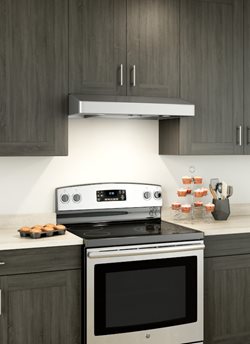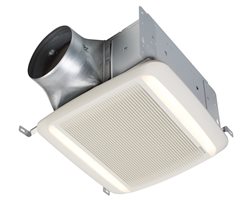IAQ FAQ: Indoor Air Quality,
The Pandemic and The Future of Home Building
All your questions about healthy living, indoor air quality and COVID-19’s effect on the future of home building, answered by experts.
.jpg?width=250&height=375)
- What are the dangers bad indoor air quality can present to our health in our “new normal”?
- Poor IAQ is linked to a multitude of serious health effects from immediate allergy-like symptoms and asthma triggers to long-term conditions such as cancer and heart disease.
- Sanitized Home ≠ Fresh Air: COVID-19 has drastically changed consumers household cleaning habits. But this constant disinfecting presents serious risks. Dangerous chemicals (VOC’s) are released into the air when you spray disinfectant, wipe a surface with bleach, or even vacuum the carpet.
- The kitchen is the primary source of indoor air pollution in a home, producing damaging moisture, grease and smoke that can quickly infiltrate every room. For those with gas stoves, there’s an even greater risk.
- Good IAQ has serious health benefits: including better sleep, increased productivity, allergy relief and cleaner living.
- Will COVID-19 will change the way homeowners and consumers think about their indoor air quality?
The study confirms that COVID-19 has drastically changed the way Americans clean, live in and use our home, but it also has consumers worrying about another airborne threat we can’t shelter in place from: the air we breathe.

- Nearly two-thirds of Americans report that they are feeling more concerned about indoor air quality (IAQ) than before.
- A staggering majority (85%) of Americans reported experiencing one or more symptoms of poor indoor air quality (IAQ) in their own home.
- Nearly 30% of those listed one or more household members suffering from respiratory and/or sinus symptoms linked to poor IAQ.
- A Taylor Morrison national survey also confirmed that more than one-third of home shoppers said they seek to purchase a new home rather than a resale for better in-home health and wellness features.
- What can designers, builders or homeowners do to improve air quality in the home?
For any designer or homeowner creating a space suited for healthy living, proper ventilation should be a priority.

- Education is first and foremost. While the majority of Americans are growing more worried about IAQ in their home, few understand the negative impacts our new cleaning, lifestyle and precautionary behaviors can have on our home and health. Educating homeowners on the causes and signs of unhealthy air is the first step towards empowering them to take action.
- As designers and homeowners work with their builders or retrofit air solutions in their own homes, it is important they are clear on the distinction between purification and ventilation to make the best decisions for their clients’ indoor air needs.
- The kitchen is the heart of the home, but it’s also the primary source of poor indoor air quality. Excessive moisture, smoke, and airborne dangers can quickly infiltrate every room in your home, especially with a gas stove. Range hoods are the most effective solution for airborne removal. From undercabinet or concealed ventilation to statement islands and chimneys, designers no longer have to choose between performance and aesthetic.
- Bathrooms, home gyms, nurseries and bedrooms also produce a high amount of air pollution, mold and odors from humidity and even breathing. Spot ventilation like bath fans in those areas helps pull out the humidity and fumes from the air before it is circulated throughout the rest of the house. By taking that polluted air out of the home, it depressurizes the house and makes room for fresh air to make its way in.
- The Whole Home is affected by today’s airtight construction techniques. Excess humidity and airborne toxins can easily get trapped in indoor air, which can have serious consequences for the structure of your home—and for the health of its occupants. Fresh Air Systems constantly remove old air and bring in fresh air for the entire home.
Helpful Links:
- Create a Healthy Home by Controlling Contamination
- Healthy Home: Controlling Moisture
- Exhaust Fan Buying Guide
- Air Purification vs. Air Ventilation: The difference between clean and fresh
Photo by Fusion Medical Animation on Unsplash

 English
English
 English
English